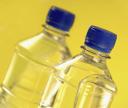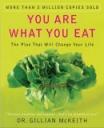Toothbrush sanitation
August 13, 2007
How clean is your toothbrush? Or rather, how dirty is your toothbrush?
A moist toothbrush sitting on a bathroom countertop is a breeding ground for bacteria, especially since a bathroom can be the most unclean room in a typical house. Those standard toothbrush holders where the brush sits upside down are basically the equivalent of your toothbrush yelling “I’m over here” to all the bacteria floating around.
Even worse, when you use the toilet, micro droplets of whatever was in it can be thrust into the bathroom air, eventually to land on your screaming toothbrush. That’s enough to make me ill just hearing about it…
There is research (google “toothbrush sanitizer” for a start) that indicates dirty toothbrushes & bacteria entering thru the mouth can lead to serious illness, so what to do? There are 2 possible easy solutions:
1) Store your toothbrush in a glass of mouthwash (with the bristles immersed in case that’s not obvious). This will kill any nasty stuff inhabiting it & prevent more from immigrating. A nice bonus is that your toothbrush will be all minty fresh. Be sure to change the mouthwash & wash the glass fairly often though as it can get a bit icky looking too after awhile.
2) Get a toothbrush sanitizer. This is what I did—I bought a Violight (http://www.violight.com), but there are a few other makes around. They are all basically the same idea: an ultraviolet light sterilizes your toothbrush as it sits in the holder. Also prevents any more bathroom cooties from landing on it between uses. Kinda gives your bathroom that blacklight nightclub kinda look too if you like that sort of thing.
Maximize your multivitamins
July 16, 2007
You can maximize the absorption of multivitamins by taking them with a meal. Food increases absorption and minimizes the chance the vitamin will upset your stomach.
To help making taking your multivitamin a habit (many people have multivitamins but don’t take them), take it with the same meal everyday.
If you take them with breakfast, don’t wash them down with coffee though. Caffeine can prevent absorption of some vitamins & minerals.
Create a healthier environment
July 12, 2007
I was just watching TV & was inspired by a commercial, of all things. Most of what I have written here has been about things you can do to make yourself healthier, but another way to improve things is to make your environment healthier, or at least less damaging to your health and that of others.
Most of you will have seen An Inconvenient Truth, Al Gore’s environmental documentary–if you haven’t seen it, you should. The point here is that we should also worry about the health of the earth, as well as our own. If the planet is sick, we will soon be too.
So what can you do, on an everyday basis? Here are some ideas:
1) Turn off , or hibernate, your PC when not in use.
2) If you are thinking of getting a new PC, consider a laptop as they use less power.
3) Turn off lights, or get motion detectors installed so lights are only on where & when you need them.
4) Use reusable shopping bags rather than plastic.
5) Walk more, drive less. Take transit or get a bicycle.
6) Use environmentally-friendly cleaning products.
7) Get a reusable stainless steel or glass water bottle.
These are just some things you can do everyday that will help.
I would now like to hear from you readers for some other ideas. What do you do daily to save the planet? Submit your ideas as comments & I will post a list of them for us all to use.
Some feedback on reusing plastic water bottles
July 5, 2007
Had a comment from Greg saying that he had found sites (below) that indicate that all this fear of reusing, or even using, plastic water bottles is unfounded.
This is exactly why I started this blog: One day you read one thing, the next the exact opposite, what & who are you to believe? Greg went and researched a little & now knows that there is a potential problem with plastic bottles, will make his own decisions, and that is all I hope to accomplish here.
Greg’s articles site the US FDA among others. Can you trust the FDA? Are they really looking out for public health or are they simply all about the money as Kevin Trudeau believes. If you haven’t read Kevin Trudeau’s Natural Cures “They” Don’t Want You To Know About you should, then decide how much you trust the FDA. I am going to look out for my own health & not leave it up to them. Heck, you can taste the plastic in the water if its been in the bottle awhile, so the water must absorb something…
I do not know if plastic water bottles are safe or not, but I am at least aware of the possibility of a health risk from a daily activity most of us think of as a healthy habit, namely drinking pure bottled water. How easy is it to use a glass or stainless steel bottle instead?
If the possible health risk isn’t enough to convince you then how about the environmental aspect of reducing plastic bottle use?
Healthier for you and for the earth, but you decide…
Thanks for the comment Greg.
Greg’s articles:
http://www.snopes.com/medical/toxins/petbottles.asp
http://urbanlegends.about.com/od/medical/a/bottled-water.htm
Recently I read somewhere that when faced with the life-altering decision of dark or light roast coffee you should choose the latter. I was grateful to read this because:
1) I always panicked at Starbucks when faced with sooooo many questions & options. Especially when the person in front of you just machine-gunned off an order like a “hot tall skinny upside down with whip caramel macchiato with room” or a “double ristretto venti nonfat organic chocolate brownie frappuccino extra hot with foam and whipped cream upside down double blended.” Yeeesh. I would need 3 or 4 espressos before I could even say that!
2) Dark roast might cause cancer. It seems the jury is still out on this, but I think I will still go for the light roast while they are deliberating.
How & why does dark roast possibly cause cancer? Well, the roasting process produces acrylamide which is a classified as a probable carcinogen by the International Agency for Research on Cancer, the US National Institutes of Health, among others.
The US EPA classifies it as more toxic than benzene, chloroform and lead (in other words, slighty less than Twinkies).
Food is the most common source of exposure for many people , and coffee is one of the worst offenders due mainly to the amount some people drink.
Acrylamide levels increase with the time-span of heating, so lighter roasts should have lower levels of this chemical. You might also want to reduce your coffee intake if you have a many-cups-a-day habit.
Dark roast or light? One less thing for me to worry about in the morning.
Avoid pasteurized and homogenized foods
June 18, 2007
Homogenization is a recent process, widespread since the 1940s or so, where the fat globules in dairy products are forcibly broken up in order to make them smaller & uniform (homogenous) in size.
If you put regular milk, straight from the cow, in your refrigerator the cream will rise to the top. You will have a layer of cream on top of what is essentially skim milk. Homogenization prevents cream from rising to the top by making its particles smaller & less likely to float. This is what allows us to buy 2% milk, instead of just whole or skim milk.
The potential problem is that because the fat globules are so small they may scar your arteries. Scarring of the arteries means the arterial walls are no longer smooth, and therefore easier for plaque or cholesterol to attach itself and begin to clog your arteries. This can eventually lead to a heart attack.
There are other potential problems related to homogenization (cancer, diabetes) as well, so I suggest reading the links below, doing a search on “homogenized dairy products,” and decide for yourself.
As with many health topics nowadays there are the group or doctors and experts that say “this” is true, and another group that says “that” is true. I, for one, have decided to pretty much eliminate dairy from my diet—milk anyhow. I still enjoy cheese & yogurt, but have reduced my intake, and will be doing some research & reading on these as I have heard contradictory info on the health benefits/risks of these as well.
One other interesting point that was made on one site that I read was that humans are the only mammals that drink the milk of other mammals. And we do it into adulthood. Even cows don’t drink cow’s milk very long after they are born…
Pasteurization is a process where dairy products, among others, are heated to kill potentially disease-causing bacteria. The problem here is that it also reduces much of the nutrient content of dairy products and destroys its live enzymes. Because much of the good bacteria that actually fight contamination are killed off during pasteurization, pasteurization itself becomes even more necessary! Pasteurization is probably not as problematic as homogenization, but it is something to be aware of.
Today it’s illegal to sell unpasteurized milk in many areas due to the belief that raw milk causes or carries sickness. However, if you read the article below at westonaprice.org you may want to reconsider drinking commercial milk at all, given the environment in which commercial dairy cows live.
Again, I encourage you do to do further research & reading on your own & make you own decisions. I had no idea there was even a possible health hazard from milk or dairy products until a couple months ago, and what I have learned since is disturbing. I only hope to let you know of the possible health threats in everyday practices that we are often unaware of—things we think are healthy are often not. I thought drinking milk was a healthy habit, but I now avoid it. I shop for unpasteurized, organic, unhomogenized dairy products now if I can find them.
Some further reading:
Don’t use plastic water bottles
June 9, 2007
Do you drink bottled water out of a plastic bottle? Ten years ago many would have laughed at the idea of paying for water, yet today I know hardly anyone (city dwellers anyhow) who drink tap water.
I don’t drink tap water either, unless I am way out in the countryside. Tap water is full of chlorine & fluoride in most cities, and neither of these is good for you (see my post on show filters for more about chlorine). I drink filtered water at home & often buy a plastic bottle when out & about. Many of you will no doubt have a reusable plastic bottle you use when at the gym, out for a walk, etc, and I used one for years. The need for clean, pure water is obvious, and many of us can’t get this from our taps, but bottled water, meant to meet this need, is a good idea poorly executed.
A few months ago I met a lady who owns her own water company. In getting to know her and what she does and why, I have learned some interesting and disturbing facts about bottled water. Here are a few of the most important related to health.
Most bottled water comes in a PET bottle (polyethylene terephthalate (PET #1 plastic). These bottles have been approved for one-time use only, yet it is common practice for many to reuse them, often for convenience, money saving, or environmental reasons. This may be a very unhealthy thing to do, however. Plastics Are Toxic. Studies show that bacteria easily breeds in PET bottles when reused and that reuse may cause DEHA, a carcinogen, to leach from the plastic into water in the bottle. A 2006 study revealed that significant levels of antimony, a toxic chemical, seeps into water sold in PET plastic bottles. This is one of the reasons why bottled water has an expiry date.
Bisphenal-A is a toxic compound found in polycarbonate (#7 plastic), the translucent, hard plastic used in Nalgene water bottles and many baby bottles. It is a hormone disruptor that mimics estrogen and is linked to early-onset puberty, declining sperm counts, obesity, and breast and prostate cancer. Due to the alarming toxicity of this chemical, in March 2007 a billion-dollar class action suit was filed in Los Angeles against five leading manufacturers of baby bottles containing Bisphenal-A.
So we can see that plastic bottles may be unhealthy, but there is also the environmental angle to consider. The pollution and energy consumption involved in the production, shipping and disposal of plastic bottles is staggering. According to Rick Smith, Executive Director of Environmental Defence, the production of one kilogram of PET plastic requires 17.5 kilograms of water and sends over half a dozen significant pollutants into the air. In other words, the water used to create one plastic bottle is significantly more than that bottle can hold.
Plastics are the fastest growing form of municipal waste. They do not biodegrade, and an estimated 88% of water bottles are not recycled. And because they float, and bottles that make it to the ocean can be mistaken as food by birds & fish. If they eat them, they are in the food chain and have the potential to harm those who don’t or can’t afford to drink from plastic bottles.
So, what to do? There are alternatives. Replace your Nalgene or other plastic bottles with a reusable stainless steel water bottle. No chemical leaching to worry about and much better for mother earth. At home, you can keep your filtered water in glass bottles. A quick internet search and you should be able to find some, or your local outdoor or health store may have some as well.
Another health book to check out
June 5, 2007
I recently came across another health book that seems quite good, though maybe a touch eccentric. It’s called Can We Live 150 Years?, by Russian Ph.D Mikhail Tombak.
Dr Tombak talks about spinal health, diet, cleansing, weight loss, food, air, water, food combining & nutrition, health without medication, juice, and apple cider vinegar among many other things. I will post any good tidbits I find, but you might want to give it a read yourself at your local library or on Amazon.
Watch out for “fizzy” drinks
June 1, 2007
Got a nasty pop habit? Might wanna kick it ASAP. One of my friends brags that he drinks a Coke a day, can’t wait to tell him what I just learned…
Fizzy drinks are bad for you. Shocker, I know. Fizzy (carbonated) drinks were #1 on Dr Gillian McKeith’s top 10 worst foods list on her TV show, You Are What You Eat.
Kevin Trudeau (Natural Cures ‘They’ Don’t Want You To Know About) also advises avoiding fizzy drinks as well. Why?
Well, first of all they are loaded in sugar. A can of Coke has about 40 grams (roughly 13 teaspoons) of the nasty white stuff. Don’t think sugar is all that bad? Check out my May 16 post “Avoid white sugar…” to see how wrong you are.
Secondly, fizzy drinks have no nutritional value. At least beer (http://beer.about.com/od/beernutrition/a/beernutrition.htm) or wine (antioxidants)have some redeeming qualities. Pops really are all negative.
The diet ones are even worse. Aspartame, Splenda, etc, may have few or no calories, but according to Kevin Trudeau, they are just toxins, or man-made poisons.
Fizzy drinks also may block absorption of vitamins & minerals. According to Kevin Trudeau they can prevent calcium absorption which can lead to conditions such as arthritis or osteoporosis. My Coke-a-day friend was diagnosed with juvenile-onset arthritis about about age 14. May just be a coincidence…or maybe not. He certainly isn’t doing himself any favors. Drink water (filtered), and do one for your body.
Recommended reading:

Daily mini detox & metabolism booster
May 22, 2007
A nice simple thing you can do now to improve your health: drink a warm cup of water each morning first thing with a little lemon juice in it.
According to Dr Gillian McKeith, among others, this will give your metabolism a boost, helping you possibly lose weight, and also act as a “mini detox” each morning. You can also try it at night too just before you go to bed.
Why warm water? Well, apparently very hot or very cold foods & drinks “shock” your body (slurpee headache anyone?), so probably not the best thing to do.
Recommended reading:









